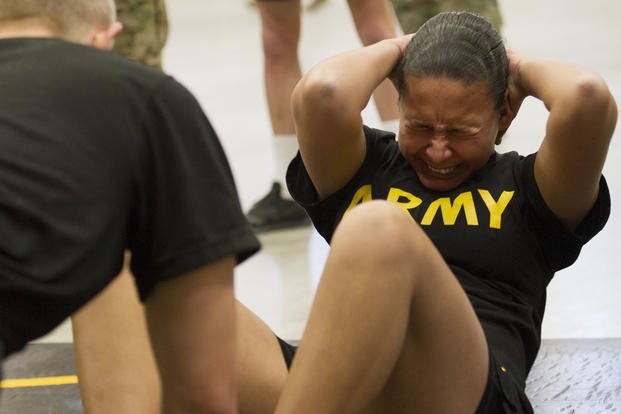No matter who you are or how you were injured, the process to heal, retrain and get ready for the next fitness test is a long, roller-coaster ride. Unfortunately, all levels of the chain of command will have to deal with these issues at some point, if not constantly.
But the ability to understand the importance of tactical fitness progressions now will help if or when you find yourself in any part of that situation. Here is an email from a young Army officer dealing with such a problem:
Hey Stew -- Long time reader. I am an Army First Lieutenant and have had to deal with soldiers in my platoon (and company) who cannot join us in regular PT and many of our normal functions due to injury. Any advice on reducing injuries in the first place? And if a soldier gets injured how can you make sure they are improving without reinjuring during that process? Seems I spend a significant part of my workday dealing with the injured more than those who are not. Thanks in advance for any recommendations.
This is a common issue that every level of the chain of command must deal with in some way or another. I recommend helping your soldiers while they are training or rehabbing, as well as decreasing the workload and time spent on dealing with tactical fitness issues.
Communication is key. Get to understand the soldier's injury and have weekly check-ins with progress, especially when in rehab or during the beginning of re-training for duty and taking PT tests again. Reinjury is all too common because they "go back to where they left off" and do not treat themselves as beginners for a few weeks. You have to be patient.
Listening is the key, but also advise the soldier to watch normal habits of food intake while recovering. The extreme shift to not exercising or moving during the recovery stage will cause quick weight gain. And the last thing you want to have happen is having a fully recovered soldier find themselves with 25 pounds to lose on top of getting back in PT test shape.
During weekly check-ins, you can help by asking open-ended questions about physical therapy exercises and time spent each day focused on recovery. See Ten Recovery Ideas and Rebuilding After Injury.
Keep the soldier employed. As much as you can, keep the soldier involved in the daily planning, preparation and training of the company and platoon. That may take some creative thought and it completely depends on the injury, but let the soldier know life goes on within the company and they are still a part of it.
There are plenty of less-physically demanding tasks that a soldier can do throughout the day to maintain the daily work habits and feel like they are still a part of the group. Compare this situation to when students miss a day of school. You and members of the chain of command are there to let them know what they missed and, hopefully when the soldier is recovered and ready to duty again, there is not a huge amount of information that needs to be rediscussed.
Work around injuries. Once again, depending on the injury, most people can work around them if they are isolated to an extremity, specific muscle or joint. For example, a soldier can maintain upper-body strength and stamina while rehabbing a running injury. And soldiers with bad shoulders can join you on leg and cardio days. Creating training programs with the platoon or company level that focus on split routines can offer ways to get certain injured soldiers back into training uninjured body parts. Having these options open to injured soldiers will help the ones that are working hard to recover and still be an active part of the company or platoon.
Learn more. As a leader within the organization, having an understanding where individuals score (running pace, lifts, calisthenics) will help you create training programs that are smart and not lead to the type of overuse injuries (especially running and rucking) that occur in the first place. Progressing with group fitness is a must, but making scalable programming so you do not incur many of the common injuries that put your soldiers on profile is also your responsibility. The last thing you want to be is the LT who can outrun everyone, so you make everyone go on frequent long, slow distance runs. Instead, learn about all the elements of fitness needed to do the work of the platoon. Start with the events of the ACFT and seek advice from local trainers on base (THOR3) so you can diversify the training and help the group avoid overuse pains.
Working smarter, not harder, applies to you as a leader in your platoon or company, so make sure the chain of command also knows the process of keeping track of soldiers' issues that affect work. The Army workload will never go away, but you can minimize it by getting creative and being smarter with physical training in the first place. Work-related accidents will happen and you have to deal with those, but you can prevent many of the overuse or over-stressed injuries by getting smarter in the process of providing scalable training options.
Stew Smith is a former Navy SEAL and fitness author certified as a Strength and Conditioning Specialist (CSCS) with the National Strength and Conditioning Association. Visit his Fitness eBook store if you’re looking to start a workout program to create a healthy lifestyle. Send your fitness questions to stew@stewsmith.com.
Want to Learn More About Military Life?
Whether you're thinking of joining the military, looking for fitness and basic training tips, or keeping up with military life and benefits, Military.com has you covered. Subscribe to Military.com to have military news, updates and resources delivered directly to your inbox.


















